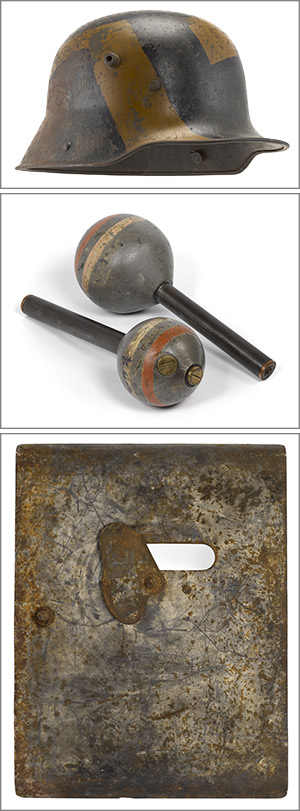By Lar Joye

Since Greek and Roman times armies have displayed captured weapons and flags as a way of celebrating their success. In Ireland we see examples of this in the form of captured Russian cannons on display outside courthouses in Ennis and Tralee. After the Crimean War (1853–6) 21 captured cannons were gifted to fourteen towns and cities around Ireland and most are still there today. In November 1916 a War Trophies Committee was established in London to look at the distribution of trophies and to assist in the creation of the Imperial War Museum. By 1922 some 3,595 guns, 15,044 machine-guns, 75,824 small arms and 7,887 other trophies had been distributed to museums, regimental depots and public bodies around the United Kingdom. According to research by the late Prof. Keith Jefferys, the committee considered offering captured German field guns to Queen’s University, Belfast, Trinity College, Dublin, and the Royal Hibernian Military College in Phoenix Park, Dublin, a trench mortar to Fivemiletown, Co. Tyrone, and even a captured German pigeon loft to Dublin’s Zoological Gardens.
Owing to the outbreak of the War of Independence (1919–21) in Ireland, it appears that none of these items were transferred. A collection of captured German army equipment was, however, given to the National Museum of Ireland. It consists mainly of the heavier pieces of equipment carried by German soldiers, such as their helmets, body armour, gas masks and sniper shields. In particular these items show how German soldiers were equipped in 1918 as storm troopers or shock troops in their March 1918 attacks. Finally, a smaller collection of British army equipment, such as mortars, mortar shells and even a sniper shield, was also donated. For many years this collection was not displayed and remained in storage, but you can now see most of it on display in Gallery 5 of the Soldiers and Chiefs exhibition in the National Museum of Ireland, Collins Barracks.
